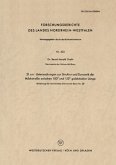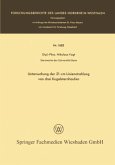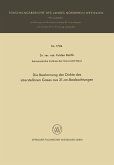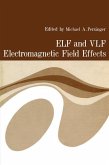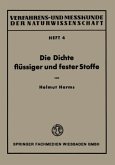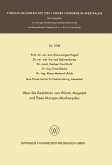21-cm-line profiles of eleven open clusters and their immediate surroundings have been obtained showing line-emission of the clusters as well as that of the general galactic field. The expected profiles for the latter have been obtained in two, partially independent, ways, and substracted from the cluster profiles. The difference-profiles suggest in several cases the presence of interstellar neutral hydrogen gas within the cluster region. In a few cases the gas seems to expand 7 with a velocity of about 7 km/sec. All clusters with an age of 2. 5 . 10 years or 8 less contain interstellar hydrogen gas while no clusters older than 1. 5 . 10 years have detectable amounts of gas. The gas is found in a region which is, in the average, 3 to 4 times the apparent optical diameter. Einleitung Ein offener Sternhaufen hebt sich als eine mehr oder minder dichte Gruppe von einigen zehn bis einigen tausend Sternen vom allgemeinen Sternfeld abo Die Untersuchung offener Sternhaufen ist flir Probleme der Sternentwicklung bedeutsam. Flir Strukturanalysen der MilchstraBe stellen - vor allem die jlin geren - Sternhaufen besonders geeignete Objekte dar. In dieser Arbeit wird der Versuch unternommen, die 21-cm-Linienemission des neutralen atomaren Wasser stoffs (HI) zu messen. Es wurden elf offene Ste:'nhaufen nach folgenden Gesichts punkten ausgewahlt: a) Es solI ein moglichst weiter Bereich des Haufenalters (frlihester Spektraltyp) iiberdeckt werden. b) Die optischen Winkeldurchmesser der Sternhaufen sollen kleiner als die MeB keule von 33' des Teleskops sein.
Hinweis: Dieser Artikel kann nur an eine deutsche Lieferadresse ausgeliefert werden.
Hinweis: Dieser Artikel kann nur an eine deutsche Lieferadresse ausgeliefert werden.


